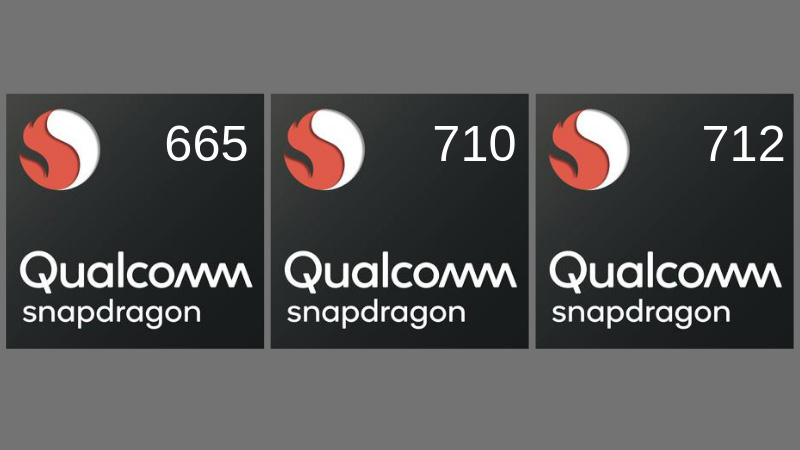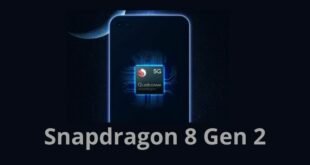Qualcomm has a different series processor for every device out there. To the low-priced Android devices, Qualcomm has the Snapdragon 400 series processors on offer. Move towards the lower mid-range market, and we have the Snapdragon 600 series processors. Then we have the newly introduced 700 series processor lineup, and at the top, we have the 800 series processors for all the flagship devices, which provide optimum performance. Here, we are going to take a look at the comparison of Snapdragon 665 vs Snapdragon 710 vs Snapdragon 712 launched by Qualcomm. We will discuss their similarities, differences, benchmarks, and results and see which one is the best on offer from Qualcomm.
Snapdragon 665 vs Snapdragon 710 vs Snapdragon 712
The Snapdragon 665 is the updated version of the 660, which was a definite hit when it was launched among mid-rangers. The 710 and slightly upgraded 712 are new to the market and aim to provide power to the upper mid-range segment of smartphones.
| Specs | Snapdragon 665 | Snapdragon 710 | Snapdragon 712 |
| CPU | Octa-core: 4x2.0 GHz Kryo 260 Gold + 4x1.8 GHz Kryo 260 Silver | Octa-core: 2x2.2 GHz Kryo 360 Gold + 6x1.7 GHz Kryo 360 Silver | Octa-core: 2x2.3 GHz Kryo 360 Gold + 6x1.7 GHz Kryo 360 Silver |
| GPU | Adreno 616 | Adreno 616 | Adreno 616 |
| Process | 11nm | 10nm | 10nm |
| Memory | 1866 MHz, LPDDR4X | 1866 MHz, LPDDR4X | 1866 MHz, LPDDR4X |
| Camera (dual lens) | 16MP+16MP (MFNR, ZSL, 30fps) | 16MP+16MP ( MFNR, ZSL, 30fps) | 16MP+16MP (MFNR, ZSL, 30fps) |
| Camera (single lens) | 25MP (MFNR, ZSL, 30fps) | 25MP (MFNR, ZSL, 30fps | 32MP (MFNR, ZSL, 30fps |
| USB | USB 3.1 | USB 3.1, USB-C | USB 3.1, USB-C |
| Storage Type | UFS 2.1, eMMC 5.1 | UFS 2.1, eMMC 5.1 | UFS 2.1, eMMC 5.1 |
| DSP | Hexagon 686 | Hexagon 685 | Hexagon 685 |
| Display | Full HD+ (2520x1080 pixels) | QHD+ (3360x1440 pixels) | QHD+ (3360x1440 pixels) |
| Charging | Quick Charge 3.0 | Quick Charge 4.0 | Quick Charge 4+ |
| Model Number | SDM665 | SDM710 | SDM712 |
CPU
Let’s take a look at what kind of hardware these processors feature. Firstly, with the Snapdragon 665, we see two Kryo 260 cores clocked at 2.0 GHz and four Kryo 260 cores clocked at 1.8 GHz. Secondly, the Snapdragon 710 packs in two Kryo 360 cores clocked at 2.2 GHz and six Kyro 360 cores at 1.8 GHz. As for the Snapdragon 712, most of the specs remain the same as the 710, but there is a slight bump in the clock speed of the two power cores, where from 2.2 GHz, we see an increase to 2.3 GHz. This results in a 10% performance boost on paper.
Process
Again, in terms of size, the 665 is built on an 11 nm process, whereas the 710 and 712 are both 10 nm processes. This means that the 700 series processors should be more power-efficient.
GPU
Despite these differences in the hardware, the GPU is still the same for all these three processors. We see the Adreno 616 GPU, which would handle any game thrown at it with ease at medium to high graphics settings(depending on the title).
Display
Now, with the hardware all sorted out, let’s look at the support on offer from these three processors. Regarding display, the 665 is limited to a resolution of 2520×1080 pixels Full HD+ without support for HDR 10. Whereas both the 710 and the 712 support the panel with a resolution of up to 3360×1440 pixels Quad HD+ with support for HDR 10. 700 series here is the clear winner.
Memory
In terms of storage, all these three processors equally support UFS 2.1 or eMMC 5.1. Moving on to the memory department, the 660 supports up to 8GB LPDDR4 dual-channel RAM, whereas with the 710 and 712, we see them hold up to 8GB LPDDR4X dual-channel memory. So here, too, the 700 series comes on top of the 665.
Optics
In the ever-so-important camera department, they all support up to a single 48MP camera or a dual 16+16MP on both the rear and front sides. However, the single-camera capability on the 700 series processor duos can be expanded up to 192MP by using pixel binning techniques. So we might see a mid-range phone rocking a GW1 64MP sensor or a 108MP ISOCELL Bright HMX, both of which were launched by Samsung recently. Even though it is a huge MP size, it is not as good as it sounds, as Samsung achieved this only through pixel binning. On the 665, in terms of optics hardware, we see the Spectra 165, whereas, with both the 710 and 712, we see the more improved Spectra 250.
Connectivity
Regarding connectivity, all three feature VoLTE with SRVCC to 3G and 2G, VoWiFi with LTE call continuity, HD and Ultra HD Voice, and dual sim VoLTE support. These are the similarities, but as far as the modem is concerned, the 665 packs in the Snapdragon X12 modem, while the 710 and 712 packs in the Snapdragon X15 modem. This gives the 700 series duo a download speed of up to 800 Mbps, whereas the 665 lies below 600 Mbps. But the upload speed remains the same for the three at 150 Mbps.
Benchmarks
As we move on to the numbers in terms of performance, the GeekBench benchmark gives the 665 a single-core score of 1526 points and a multi-core score of 5600 points. The 710 scores a single-core score of 1899 points and a multi-core score of 5966. Lastly, but the top among the three, the 712 gets a single-core score of 1910 points and a multi-core score 6060. Here, you can see how small the margin is between 710 and 712 in terms of numbers.
Now for the Antutu benchmark, the number one among the three, the 712 scores the highest with 1,87,000 points, with the 710 just behind it at 1,84,000 points and the 665 trailing last at 1,60,000 points.
Snapdragon 665 vs 710 vs 712: Which one is the Best Processor?
The 712 is the best among them all, not only on paper but also in reality. However, in terms of daily tasks, all these three will perform similarly. How a manufacturer uses these processors is now up to them. Hopefully, they will be able to make the maximum out of these processors to be used in the mid-range devices coming in 2019.



